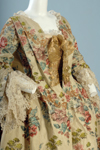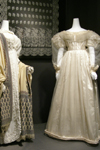|
"Luxury”
signifies far more than the mere enjoyment of expensive things
--it implies an excessive indulgence in sensual pleasures.
Indeed, the very word once meant “lust” or “lasciviousness.”
Luxury has always been controversial, and many influential
thinkers believed luxury to be morally corrupting. “On the soft
beds of luxury, most kingdoms have expired,” pontificated one
writer, while the poet Milton imagined ominously that “All was
now turned… to luxury and riot.”
But after centuries of opprobrium, the politics of luxury began
to change. A new belief developed in the 18th century that
luxury could be a positive force contributing to the wealth of
nations. Private vices, such as extravagance and vanity, could
be public virtues, because they provided work for countless
artisans. Not everyone was convinced. Luxury might be
economically enriching, admitted the philosopher Jean-Jacques
Rousseau, but it subverted equality and virtuous simplicity.
While moralists and economists argued about whether luxury
created wealth or squandered it, everyone recognized that luxury
goods made the social hierarchy visible.
The model of luxury was aristocratic and artisanal. Even though
labor costs were low, many products were rare, difficult to
obtain, or produced only in limited quantities. A fashionable
robe à la française, for example, might be made from yards of
expensive silk brocade draped over side hoops, trimmed with
handmade lace, and elaborately accessorized. For the most part,
anonymous artisans produced luxury goods for an elite clientele.
There were, as yet, no luxury brands or “name” designers,
although Rose Bertin was notorious as Marie Antoinette’s
“Minister of Fashion.”
next page |
|
|
 |
 |
|
|
|
| |
This exhibition was organized by Dr. Valerie Steele, Tamsen
Schwartzman, and Fred Dennis, with assistance from Clare Sauro, Harumi Hotta, and
Lynn Weidner, and with special thanks to Julian Clark. It has been made possible thanks to the generosity of
the members of the Couture Council.
Website designed by Tamsen Schwartzman. |
|
|